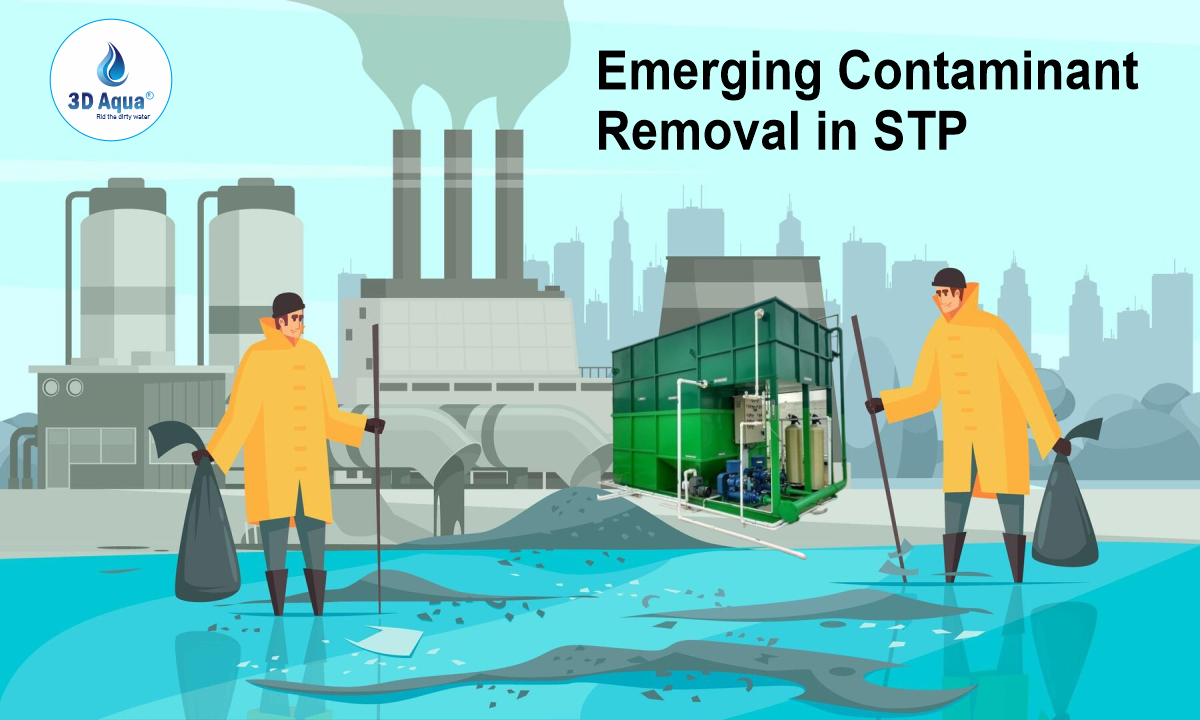Effective Contaminant Removal in Sewage Treatment Plants: Innovations and Strategies
Sewage treatment plants (STPs) play a crucial role in maintaining water quality by removing a variety of contaminants that originate from residential, commercial, and industrial sources. As water pollution continues to be a pressing concern, the demand for advanced treatment solutions has grown significantly. The removal of emerging contaminants in sewage treatment plants is a vital process that protects ecosystems and ensures public health.
This article explores modern technological advancements, monitoring techniques, and regulatory measures that enhance contaminant removal in STPs. By implementing innovative solutions, treatment plants can improve efficiency, comply with environmental regulations, and deliver clean water to communities.
Types of Contaminants Removed in Sewage Treatment Plants
Various pollutants find their way into water systems through household waste, industrial effluents, and stormwater runoff. These contaminants pose potential health risks and environmental concerns if not adequately treated. The most common categories of contaminants include:
- Physical Contaminants – Suspended solids, sediments, and organic debris.
- Chemical Contaminants – Heavy metals (lead, mercury, arsenic), pesticides, pharmaceutical residues, and industrial chemicals.
- Biological Contaminants – Bacteria, viruses, protozoa, and parasites.
- Nutrient Pollutants – Excess nitrogen and phosphorus that contribute to algal blooms and water eutrophication.
- Emerging Contaminants – Microplastics, personal care products, endocrine-disrupting compounds (EDCs), and per- and polyfluoroalkyl substances (PFAS).
Advanced Technologies for Contaminant Removal in STPs
To improve the efficiency of sewage treatment, engineers are integrating cutting-edge filtration methods, chemical treatment processes, and smart monitoring technologies. Below are some of the most effective innovations in wastewater purification.
1. Advanced Filtration and Membrane Technologies
Filtration plays a vital role in removing suspended solids and dissolved impurities from wastewater. Recent advancements in membrane technologies have significantly improved contaminant removal rates.
- Ultrafiltration (UF) and Nanofiltration (NF): These filtration systems trap bacteria, viruses, and micropollutants, ensuring cleaner effluent.
- Reverse Osmosis (RO): Used for advanced purification, RO removes heavy metals, pharmaceuticals, and other dissolved contaminants.
- Activated Carbon Filtration: Effectively adsorbs organic pollutants, including pesticides, pharmaceutical residues, and EDCs.
- Biofiltration: A natural filtration process that uses microbial communities to break down contaminants and improve water quality.
2. Chemical Treatment for Pollutant Breakdown
Chemical processes enhance wastewater treatment by breaking down and neutralizing harmful substances. These methods are widely applied to remove industrial pollutants and persistent contaminants.
- Coagulation and Flocculation: These techniques use chemicals like aluminum sulfate and ferric chloride to aggregate suspended solids for easier removal.
- Advanced Oxidation Processes (AOPs): Uses oxidizing agents such as ozone (O₃) and hydrogen peroxide (H₂O₂) to degrade pharmaceutical residues and micropollutants.
- Electrochemical Treatment: An emerging technique that applies electrical currents to eliminate heavy metals and organic pollutants from wastewater.
- Chlorination and UV Disinfection: Helps in microbial deactivation by neutralizing pathogens, ensuring safer water discharge.
Monitoring and Detection of Emerging Contaminants
Real-time monitoring of wastewater quality is crucial in maintaining treatment efficiency and ensuring compliance with environmental regulations. Engineers use advanced sensor technologies and analytical techniques to detect and quantify pollutants in sewage treatment plants.
1. Smart Sensor Technologies
Modern water quality sensors provide real-time data on contaminants and treatment efficiency. These sensors detect fluctuations in pH, total dissolved solids (TDS), turbidity, dissolved oxygen (DO), and chemical oxygen demand (COD).
- Remote Monitoring Systems: Allow operators to track water quality from a centralized dashboard, reducing the need for manual checks.
- Automated Alert Systems: Send instant notifications if contamination levels exceed permissible limits, enabling rapid corrective action.
- Microbial Detection Sensors: Identify pathogenic bacteria and viruses to ensure the effectiveness of disinfection processes.
2. Laboratory Analytical Techniques
Laboratory-based analytical techniques provide detailed insights into the composition of wastewater. These methods are essential for detecting trace levels of emerging contaminants and fine-tuning treatment processes.
- Gas Chromatography-Mass Spectrometry (GC-MS): Identifies and quantifies organic contaminants like pesticides and pharmaceutical residues.
- Inductively Coupled Plasma Mass Spectrometry (ICP-MS): Used for detecting heavy metals such as lead, mercury, and arsenic.
- Liquid Chromatography (LC-MS): Effective in analyzing microplastics, personal care product residues, and industrial chemicals.
- Bioassays and Toxicity Testing: Evaluates the potential environmental impact of treated wastewater.
Optimizing Sewage Treatment for Efficiency and Compliance
Achieving optimal process efficiency and regulatory compliance is essential for sewage treatment plants. Engineers work to enhance operational performance while ensuring adherence to national and international wastewater discharge standards.
1. Process Optimization for Improved Efficiency
- Energy-Efficient Aeration Systems: Reduce power consumption while maintaining biological treatment efficiency.
- Sludge Management Strategies: Convert sludge into bioenergy or fertilizers to minimize waste disposal costs.
- Process Automation: AI-driven automation optimizes chemical dosing, filtration speed, and sludge removal.
- Water Reuse and Recycling: Treated wastewater can be reused in irrigation, industrial processes, and groundwater recharge projects.
2. Compliance with Environmental Regulations
Strict environmental regulations guide the treatment and discharge of wastewater to prevent pollution and protect water bodies.
- Effluent Discharge Standards: Adherence to CPCB, EPA, and WHO guidelines ensures wastewater meets required quality benchmarks.
- Zero Liquid Discharge (ZLD) Solutions: Minimize wastewater discharge by maximizing water recovery.
- Public and Industrial Collaboration: Encourages industries to pre-treat wastewater before releasing it into municipal sewage systems.
- Periodic Compliance Audits: Ensures sewage treatment plants remain in alignment with changing environmental laws.
Conclusion: The Future of Contaminant Removal in Sewage Treatment Plants
Emerging contaminants pose a growing challenge in wastewater management, necessitating continuous improvements in treatment technologies. The integration of advanced filtration methods, chemical treatments, and smart monitoring systems enhances the efficiency of sewage treatment plants.
At 3D Aqua, we specialize in designing and manufacturing state-of-the-art sewage treatment plants equipped with cutting-edge contaminant removal technologies. Our solutions are tailored to meet regulatory requirements, improve water quality, and ensure environmental sustainability.
For expert sewage treatment solutions, contact 3D Aqua today!
📞 Call Us: 7011143366
📧 Email: info@3daqua.in
🌍 Website: www.3daqua.in
Ensure effective wastewater treatment with 3D Aqua – your trusted partner in sustainable water management!

